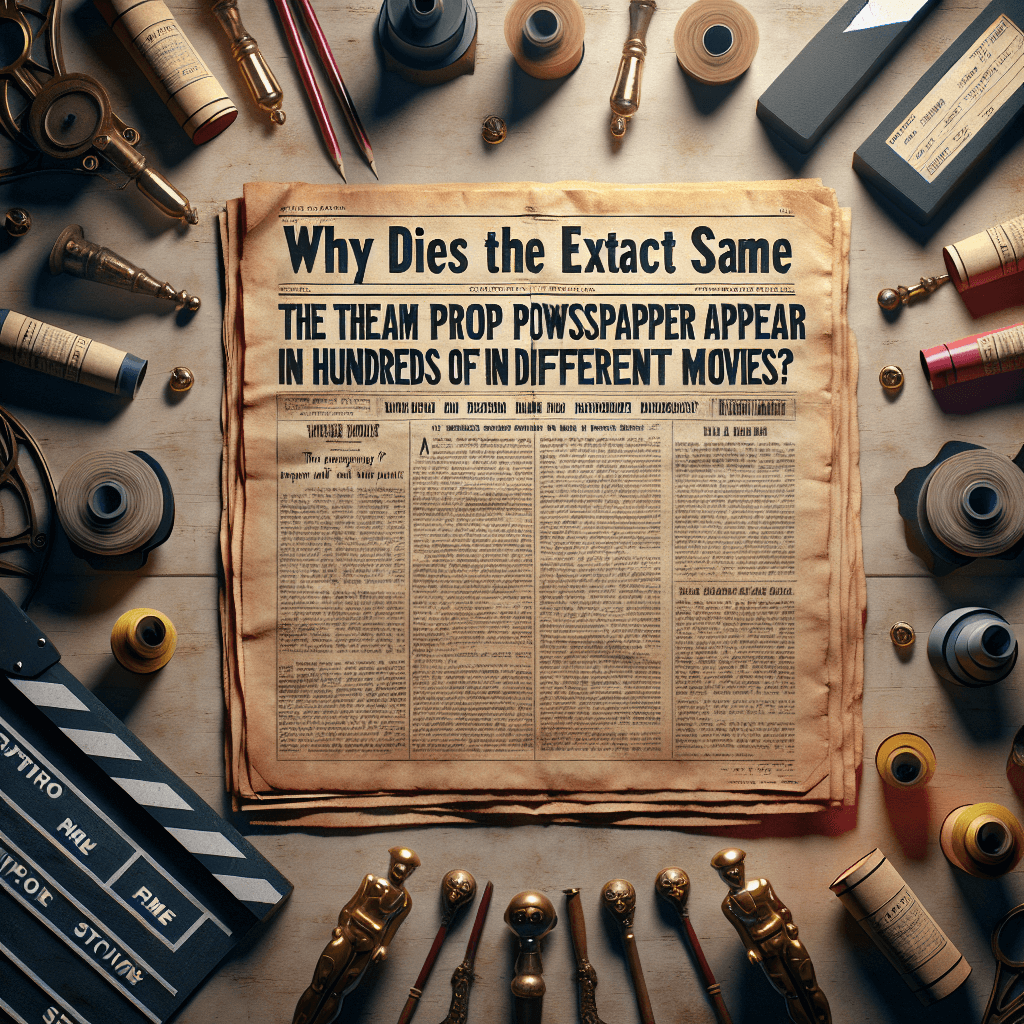Why does the exact same prop newspaper appear in hundreds of different movies
You've seen it in hundreds of movies and TV shows without ever realizing it. Discover the secret behind the most famous prop you've never noticed.


Too Long; Didn't Read
TLDR: That newspaper is a generic, legally-cleared prop created by a prop house. It's far cheaper, faster, and legally safer for productions to reuse this recognizable prop than to get permission to use a real newspaper or design a new one from scratch.
The Hollywood Enigma: Why Does the Exact Same Prop Newspaper Appear in Hundreds of Different Movies?
Have you ever experienced a strange sense of déjà vu while watching a movie? You’re engrossed in a scene, and a character picks up a newspaper. For a split second, you feel like you’ve seen that exact paper before—the same masthead, the same photo of a woman on the left, the same generic layout. You haven’t gone crazy; you’ve just spotted one of Hollywood’s most prolific, yet unsung, actors: the generic prop newspaper. This single, unassuming prop has made appearances in hundreds of films and TV shows, from No Country for Old Men to Desperate Housewives. This blog post will unravel the mystery behind this ubiquitous paper, exploring the practical and legal reasons why filmmakers turn to this specific prop time and time again.
The Prop You've Seen a Thousand Times
Before we dive into the "why," let's talk about the "what." The most famous of these recurring props is a broadsheet newspaper easily identified by its distinctive front page. It typically features a two-column photo layout with a picture of a dark-haired woman on the left. The text is intentionally generic, and the headlines are often non-specific to avoid dating the prop or tying it to a particular event.
Its filmography is staggering. It has been held by characters in the sci-fi world of Back to the Future, the quirky town of Charmed, the crime scenes of NCIS, and the chaotic hospital of Scrubs. Its versatility is its greatest strength, allowing it to blend seamlessly into the background of almost any modern setting without drawing unwanted attention—unless you know what to look for.
Why Not Just Use a Real Newspaper? The Legal Labyrinth
The primary reason for the existence of this prop is surprisingly simple: the law. Using a real-world newspaper like The New York Times or the Los Angeles Times on screen is a legal minefield for production companies. Here’s why:
- Copyright and Trademark: Real newspapers are copyrighted products. Their names, logos, and layouts are trademarked. To use them in a film, a production would need to secure permission and often pay a licensing fee. This process adds time and expense to an already complex production schedule.
- Defamation and Libel: Imagine a fictional movie where a character reads a real newspaper with a fake, scandalous headline created for the plot. The real-life newspaper could sue the production for libel, arguing that the film falsely represented their publication and damaged their brand integrity.
- The Need for "Clearance": In the film industry, every prop, brand name, and piece of artwork visible on screen must be "cleared" for use. This means the production has the legal right to feature it. A generic, fictional newspaper is pre-cleared, offering filmmakers a safe, hassle-free, and cost-effective alternative.
The Mastermind Behind the Paper: The Earl Hays Press
So, who makes this famous paper? The credit goes to The Earl Hays Press, a Hollywood prop house that has been servicing the film and television industry since 1915. This company specializes in creating all sorts of legally-cleared printed materials, from fictional magazines and cigarette brands (like the famous Morley cigarettes) to food packaging and, of course, newspapers.
The design of their flagship newspaper is a work of subtle genius. It looks authentic from a distance but contains non-sensical filler text that won’t distract an actor or be legible to a high-definition camera. Its timeless layout allows it to appear in a movie set in the 1970s just as easily as one set today. By creating a one-size-fits-all solution, The Earl Hays Press provides an invaluable service, saving productions countless hours and thousands of dollars in legal and design fees.
Conclusion
The story of the recurring prop newspaper is more than just a fun piece of movie trivia. It’s a perfect example of the invisible, problem-solving artistry that makes filmmaking possible. This simple sheet of paper exists at the intersection of legal necessity, practical efficiency, and subtle design. It solves the complex issue of copyright and clearance with an elegant, reusable solution that has become an accidental icon of cinema. So, the next time you spot this familiar prop, give a silent nod to the prop masters and legal teams working behind the scenes. You’re not just seeing a prop; you’re seeing a clever piece of Hollywood history hidden in plain sight.
More Articles

Why is the world's lightest solid material actually made of ninety-nine percent air?
It looks like a piece of frozen smoke and feels almost weightless—discover the mind-bending science behind how this ghostly material gets its incredible strength from being almost entirely empty space.

Why are the edges of highways intentionally designed to be so loud and bumpy?
That loud, teeth-rattling vibration you feel at the edge of the highway isn't a flaw in the road; it’s an ingenious alarm system designed to save your life.

How can a sea slug eat a jellyfish's stingers and then use them for its own defense?
This soft-bodied slug commits the perfect crime, eating a jellyfish's venomous stingers only to wield them as its own deadly defense.